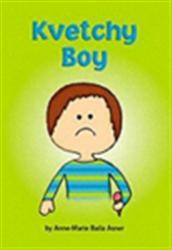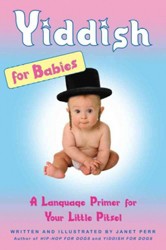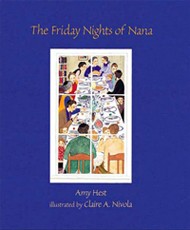The Yiddish lullaby “Raisins and Almonds” (“Rozhinkes mit Mandlen”) is a survivor of the lost world of Eastern European Jews. Originally a poem by Abraham Goldfaden that drew on Jewish folklore, it was first popularized in his Yiddish operetta Shulamith (1881). The lyrics embody hope for a persecuted people, as well as a vision of protective Jewish motherhood. Raisins and Almonds: A Yiddish Lullaby uses this sweetly mournful poem as the pretext for reimagining a child’s journey to sleep, while introducing specific markers of Jewish identity to revitalize the poem’s aura of Yiddishkeit for a new young audience. The result is a modern classic.
In Goldfaden’s poem, the child carries the universal name Yidele (little Jew), and we only see him through his mother’s desire for a future of secure prosperity. With Raisins and Almonds, Susan Tarcov and Sonia Sánchez create a new heroine in Bella, an energetic and imaginative girl with traces of both Pippi Longstocking and Eloise. Frightened by a noise under her bed, Bella runs to her mother who reassures her that she has only heard a little white goat whose “little store is there, under your bed.” In the original lullaby, the goat is a traveling merchant who sells items such as raisins and almonds, which predict the child’s future livelihood. Bella asks her mother what the goat will sell. Her response, “You never know. You’ll have to go and see,” is transformed by Bella into permission to create a wonderful vision, one that departs significantly from the song.
Tarcov captures the limitless associations of childhood, as Bella wonders if the goat will have a green bicycle helmet or a necklace like her Bubbe’s. Other animals accompany her on her fantastic journey, including a kippah-wearing rabbit, a ravenous wolf who craves pickled herring and pastrami, and a family of mice whose home is protected by a mezuzah. As Bella invites the creatures along, each one asks her about the previous travel companion, both excited and skeptical about the possibilities of what they might learn. Bella repeats her mother’s phrase, “You never know,” as she takes over the caregiver’s role of authority in her invented world. Allusions to Jewish life, and rhythmic repetition of her mother’s phrase, keep Goldfaden’s poem in the picture as a distant but fruitful source.
Sánchez’s images are wildly vivid, with broad brushstrokes and colors from nature combined with miniaturized detail. In one two-page spread a mouse cautiously looks out of its hole across a field of lightly sketched blue and green grasses, and yellow flowers that almost melt into the background. The object of his admiration is a completely realized mouse apartment on top of a bureau. One mouse is white and wears glasses. The rest of his family is grey; they sip from tiny red and white polka dotted mugs at a table covered with a delicate yellow runner. Upright books and a ball of yarn form one wall, while a silver menorah stands guard over them. The book ends with an equally rich image that brings the story full circle. The white goat of both Goldfaden’s poem and the modern tale is indeed a successful merchant, managing a store overflowing with the raisins, almonds, and other delicious items which in earlier Jewish history might have remained unfulfilled aspirations. Although Bella’s mother only appears briefly in the book, she is memorable, and is as nurturing as the mother in the lullaby even as she looks realistically exhausted. There is no father in the bed with her, an interesting choice that adds another dimension to her patience.
Raisins and Almonds: A Yiddish Lullaby is highly recommended for children ages 3 to 8, as well as for anyone who loves the original song, and for fans of distinguished picture book art. An author’s note describes the song’s origin and a scannable QR code is included so that readers can hear it performed.
Emily Schneider writes about literature, feminism, and culture for Tablet, The Forward, The Horn Book, and other publications, and writes about children’s books on her blog. She has a Ph.D. in Romance Languages and Literatures.




